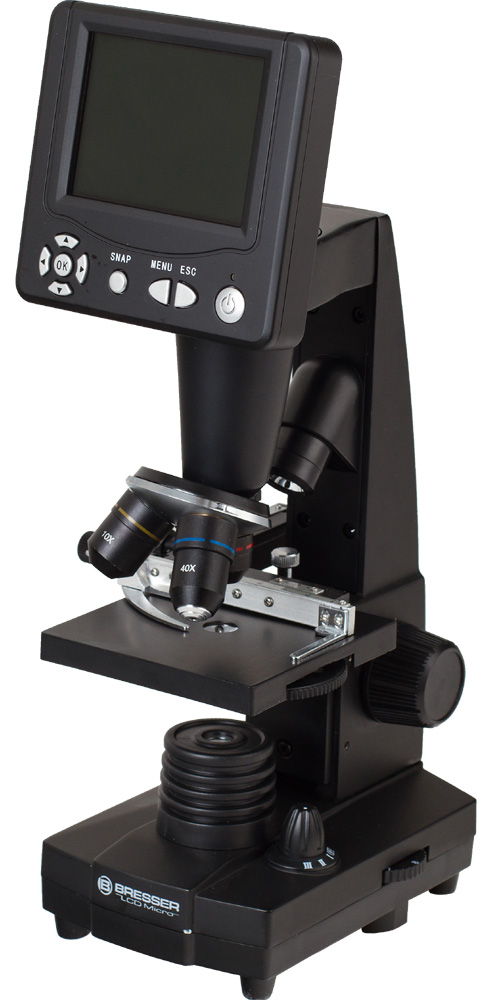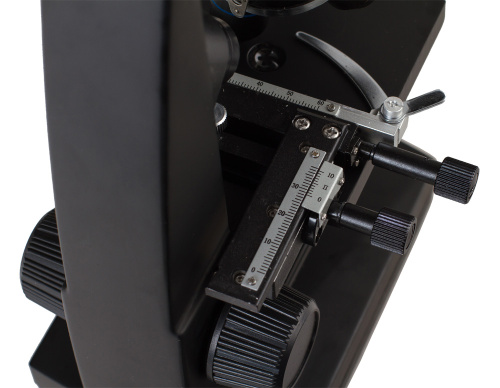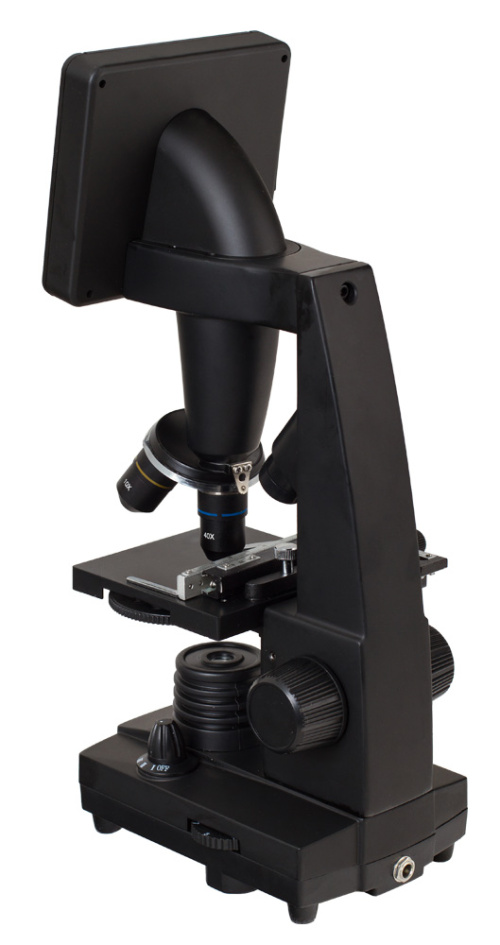Bresser LCD 50–2000x Microscope
Digital microscope. Magnification: 50–2000x
| Product ID | 64647 |
| Brand | Bresser GmbH, Germany |
| Warranty | 2 |
| EAN | 4007922151953 |
| Package size (LxWxH) | 15x17x37 |
| Shipping Weight | 2.1 |
Bresser LCD 50–2000x Microscope can be used for different purposes: from education to microelectronics. It is equipped with lower and upper illumination, which makes it possible to observe samples in both transmitted and reflected light. The turret is equipped with three objectives – they can be quickly switched in order to change magnification power, which ranges from 50x to 500x. Along with that, instead of an eyepiece, the microscope has a 5-megapixel digital camera with a 3264x2448 resolution. This, in turn, gives a digital zoom up to 2000x. With this camera, you can take pictures and record videos of observed objects, saving them for further work. Bresser LCD 50–2000x Microscope comes with a wide range of accessories indispensable for beginner researchers.
The kit includes:
- Bresser LCD 50–2000x Microscope
- Objectives: 4x, 10x, 40x
- Stage drive forwards/back
- Stage drive left/right
- Colour filter plate
- USB cable
- AC adapter (220 V/5V, 50 Hz)
- Experiment kit
- Blank slides and cover slips
- Flask with yeast
- Flask with sea salt
- Hatchery for Artemia (brine shrimp)
- Flask with brine shrimp
- Nylon pouch
| Product ID | 64647 |
| Brand | Bresser GmbH, Germany |
| Warranty | 2 |
| EAN | 4007922151953 |
| Package size (LxWxH) | 15x17x37 |
| Shipping Weight | 2.1 |
| Type | biological, light/optical, digital |
| Head | digital screen/PC monitor |
| Magnification, x | 50 — 2000 |
| Objectives | 4x, 10x, 40x |
| Revolving nosepiece | for 3 objectives |
| Stage features | coordinate, with a Vernier scale and mechanical stage |
| Illumination | LED |
| Brightness adjustment | ✓ |
| Power supply | USB cable, 220V/50Hz |
| Light filters | 6 pcs. |
| Application | school/educational, laboratory/medical |
| Illumination location | dual |
| Research method | bright field |
| Experiment kit included | ✓ |
| Pouch/case/bag in set | pouch |
| Maximum resolution | 3264x2448 |
| Megapixels | 5 (up to 8 with interpolation) |
| Sensor element | 3.5" |
| Video recording | yes |
| Image format | *.jpeg |
| Video format | *.3gp |
| Frame rate | up to 10 frames per second: 320x240 |
| Usage location | eyepiece tube (replaces an eyepiece) |
| Output | mini-USB |
| System requirements | OS Windows XP/Vista/7/8/10 (32 and 64 bit) |
We have gathered answers to the most frequently asked questions to help you sort things out
Find out why studying eyes under a microscope is entertaining; how insects’ and arachnids’ eyes differ and what the best way is to observe such an interesting specimen
Read this review to learn how to observe human hair, what different hair looks like under a microscope and what magnification is required for observations
Learn what a numerical aperture is and how to choose a suitable objective lens for your microscope here
Learn what a spider looks like under microscope, when the best time is to take photos of it, how to study it properly at magnification and more interesting facts about observing insects and arachnids
This review for beginner explorers of the micro world introduces you to the optical, illuminating and mechanical parts of a microscope and their functions
Short article about Paramecium caudatum - a microorganism that is interesting to observe through any microscope















